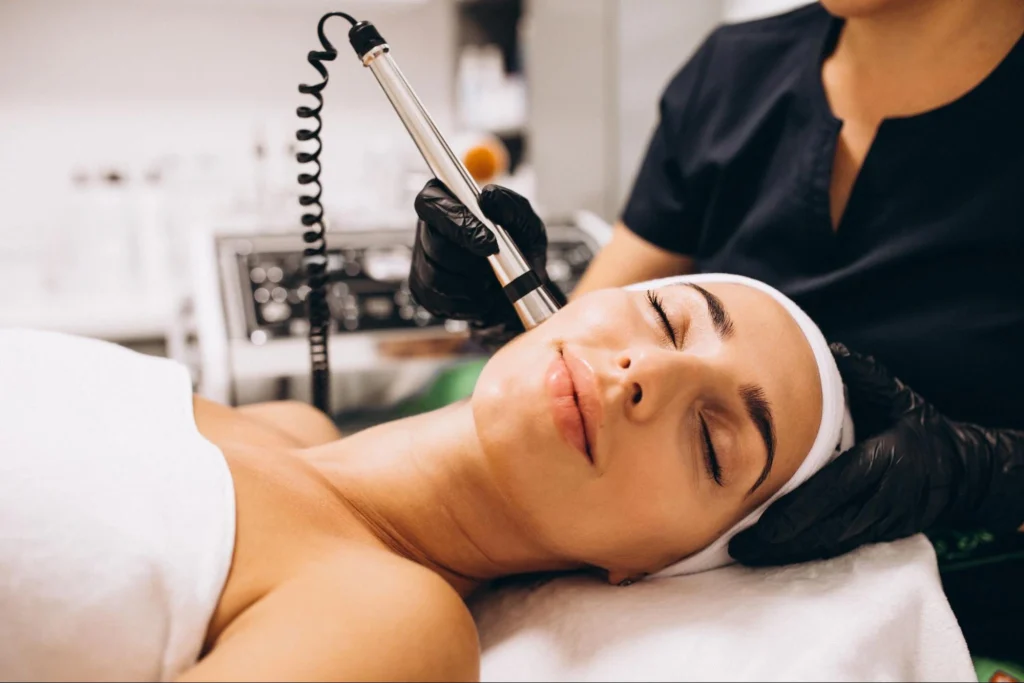Hyperpigmentation is a common skin condition affecting individuals of all skin tones and causes a change in skin colour in certain areas of the skin. Although it can affect all skin tones, if you have black skin, it can be longer lasting, particularly noticeable and distressing.
Hyperpigmentation refers to a spot or area of skin that is darker than the colour of the surrounding area. The actual colour of hyperpigmentation will depend on the cause; it may appear blue, purple, grey or black.
Have you noticed areas of your skin have become darker, or do you have dark spots you’re concerned about? In this post, we look at the types and causes of hyperpigmentation and natural hyperpigmentation treatments for black skin.
What causes hyperpigmentation?
Hyperpigmentation occurs when there is an overproduction of melanin, the pigment that colours our skin, hair, and eyes. Melanin production is controlled by the melanocyte cells in our skin. When these cells become overactive, they can cause dark patches or spots to appear.
The causes of too much melanin production are the same for all skin tones and include:
- Sun exposure
- Hormonal changes, especially during pregnancy and menopause or due to polycystic ovary syndrome (PCOS)
- Allergic reactions to skincare or hair products
- Obesity
- Type 2 diabetes
- Thyroid disease
- Medication, including contraceptive pills and corticosteroids
- Genetics.
Four common types of hyperpigmentation
The four most common types of hyperpigmentation are:
- Melasma: This is a common form of hyperpigmentation characterised by symmetrical, dark patches on the face, typically on the cheeks, forehead, and upper lip. It is often caused by hormonal changes, such as pregnancy or taking birth control pills, and can be exacerbated by sun exposure.
- Solar lentigines: These are also known as “age spots” and are caused by prolonged sun exposure. They appear as small, dark spots on the skin, typically on the face, hands, and arms.
- Acanthosis nigricans: This condition is characterised by thick, velvety, darkened skin in the creases and folds of the body, such as the neck, armpits, and groin. It is often associated with obesity and diabetes.
- Post-inflammatory hyperpigmentation (PIH): This type of hyperpigmentation occurs due to injury or inflammation of the skin because of acne or eczema. It is characterised by dark spots or patches in the area where the injury occurred. Potential causes of post-inflammatory hyperpigmentation (PIH) include:
-
- Acne — especially nodules and cysts that can burst and damage the surrounding skin
- Pseudofolliculitis barbae (PFB) — caused by shaving
- Skin conditions — such as eczema, contact dermatitis, psoriasis and lichen planus
- Lupus — an autoimmune disease that causes systemic inflammation
- Insect bites and infections — that cause rashes, blisters or sores
- Cuts — due to injury or surgery
- Burns
- Electrolysis — especially when not done by a professional
- Waxing — especially when not done by a professional.
Although hyperpigmentation can affect all skin tones, it is a common condition in black skin.
Hyperpigmentation treatment for black skin
Treatments for hyperpigmentation are generally more effective when it affects the epidermis, the outer layer of skin. However, when hyperpigmentation affects the dermis or both the epidermis and the dermis, it is typically more difficult to treat and will likely take longer to fade.
There are various professional ways to treat hyperpigmentation of black skin, such as chemical peels, microneedling and plasma treatment. Another way to lighten dark spots and areas of hyperpigmentation is by using topical skin-lightening products. These products can be purchased over the counter or online. However, buying skin-lightening products without a prescription is not advisable and many products sold online are illegal or have been found to contain dangerous ingredients.
The two most common topical skin-lightening products you can get on prescription from a dermatologist or doctor are:
- Hydroquinone. This has been banned in all over-the-counter skin care products and is only available on prescription from a dermatologist or doctor. Please beware if you see this ingredient in a product you buy over the counter or online, as it may cause serious long-term side effects. Additionally, it means the skin whitening product is illegal and may contain other harmful ingredients.
- Corticosteroids. Often referred to as steroid creams, corticosteroids should only be used for a short time. This is because they can lead to skin thinning or discolouration.
Natural treatments for hyperpigmentation of black skin
There are several natural treatment options for hyperpigmentation that can be effective in lightening dark patches on the skin. Some of the researched natural ingredients found in topical skincare that may help to lighten all skin types include:
- Vitamin C
- Kojic acid
- Azelaic acid
- Retinoids
- Niacinamide
- Aloe vera gel
It is important to note that while these natural treatment options can be effective for lightening hyperpigmentation, it may take longer to see results compared to chemical or a professional treatment performed by an aesthetic practitioner. Also, as with any treatment, it is important to do a patch test to ensure you are not allergic to any of these ingredients.
When treating hyperpigmentation, it is important to avoid:
- Over-exfoliating the skin
- DIY remedies, such as using lemon juice or baking soda
- Products containing high concentrations of alpha hydroxy acids (AHAs) or beta hydroxy acids (BHAs)
- Skin-lightening products sold online that claim to lighten the skin quickly and significantly (many of these products contain harmful or unproven ingredients that can cause allergic reactions or serious side effects)
Take away
During and after the treatment of hyperpigmentation, you should also take steps to protect your skin from damage and minimise the triggers that can cause it to reoccur. Some measures you can take include:
- Use sunscreen. Sun exposure is a major cause of hyperpigmentation, so protecting the skin from the sun’s harmful UV rays is important. Use sunscreen with at least SPF 30, and reapply it every two hours, especially if you are outdoors.
- Wear protective clothing. Long-sleeved shirts, pants, and wide-brimmed hats can also help to protect the skin from sun damage.
- Stay hydrated. Drinking water or herbal tea regularly throughout the day can help to keep your skin hydrated and healthy, helping to prevent hyperpigmentation.
Generally, hyperpigmentation will fade. However, without treatment, fading can take years. Overall, natural products may help treat hyperpigmentation in black skin. However, if you have had dark spots or areas of hyperpigmentation for longer than a year, you will need to use a prescribed topical product or professional hyperpigmentation treatments.
Shumaila’s aesthetic clinics in London and Essex provide hyperpigmentation treatments that are safe and effective for all skin types. Book your FREE consultation today to find out which kind of hyperpigmentation treatment is best for your skin colour.


